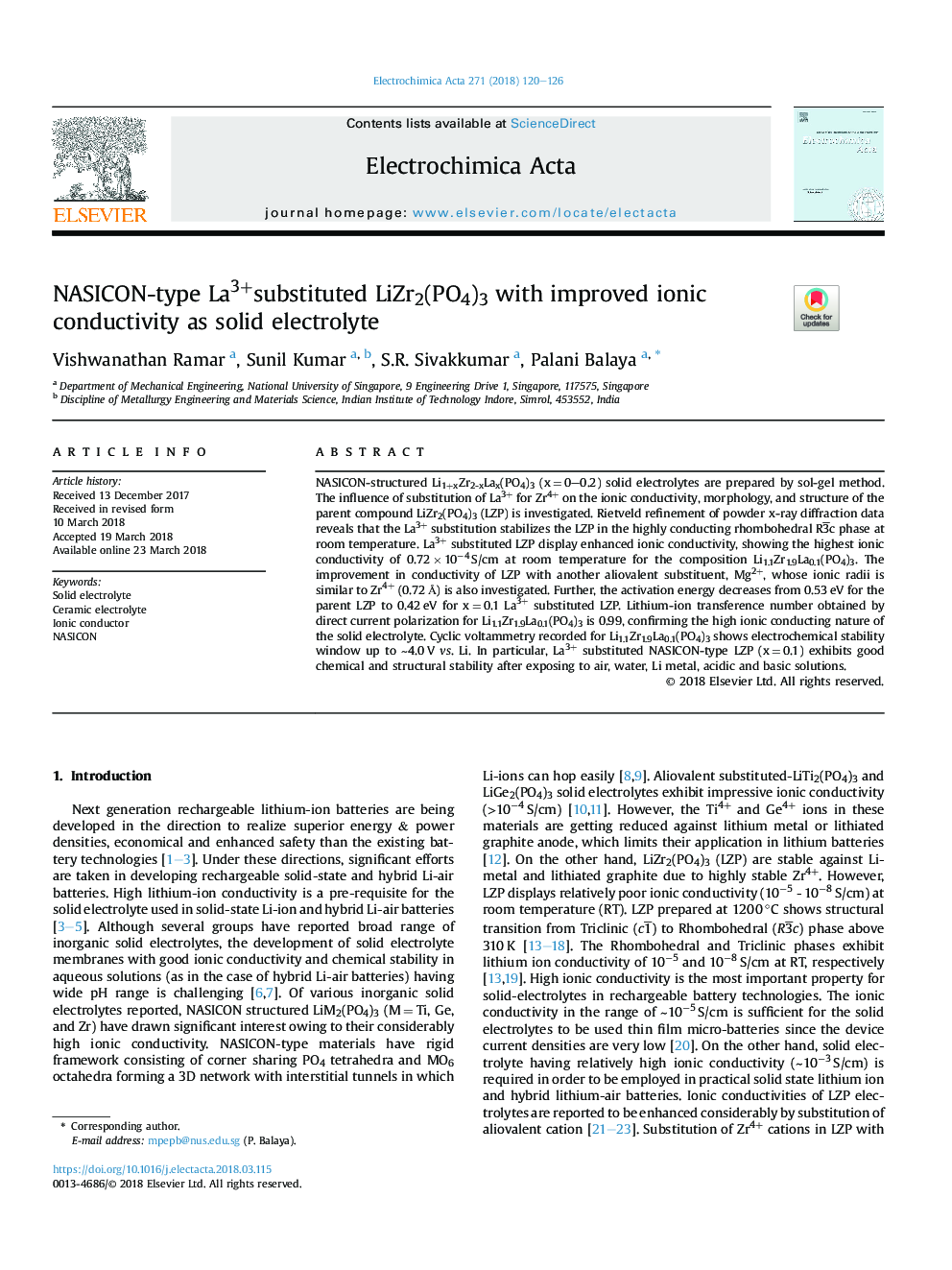| Article ID | Journal | Published Year | Pages | File Type |
|---|---|---|---|---|
| 6603215 | Electrochimica Acta | 2018 | 7 Pages |
Abstract
NASICON-structured Li1+xZr2-xLax(PO4)3 (xâ¯=â¯0-0.2) solid electrolytes are prepared by sol-gel method. The influence of substitution of La3+ for Zr4+ on the ionic conductivity, morphology, and structure of the parent compound LiZr2(PO4)3 (LZP) is investigated. Rietveld refinement of powder x-ray diffraction data reveals that the La3+ substitution stabilizes the LZP in the highly conducting rhombohedral R3¯c phase at room temperature. La3+ substituted LZP display enhanced ionic conductivity, showing the highest ionic conductivity of 0.72â¯Ãâ¯10â4â¯S/cm at room temperature for the composition Li1.1Zr1.9La0.1(PO4)3. The improvement in conductivity of LZP with another aliovalent substituent, Mg2+, whose ionic radii is similar to Zr4+ (0.72â¯Ã
) is also investigated. Further, the activation energy decreases from 0.53â¯eV for the parent LZP to 0.42â¯eV for xâ¯=â¯0.1 La3+ substituted LZP. Lithium-ion transference number obtained by direct current polarization for Li1.1Zr1.9La0.1(PO4)3 is 0.99, confirming the high ionic conducting nature of the solid electrolyte. Cyclic voltammetry recorded for Li1.1Zr1.9La0.1(PO4)3 shows electrochemical stability window up to â¼4.0â¯V vs. Li. In particular, La3+ substituted NASICON-type LZP (xâ¯=â¯0.1) exhibits good chemical and structural stability after exposing to air, water, Li metal, acidic and basic solutions.
Related Topics
Physical Sciences and Engineering
Chemical Engineering
Chemical Engineering (General)
Authors
Vishwanathan Ramar, Sunil Kumar, S.R. Sivakkumar, Palani Balaya,
